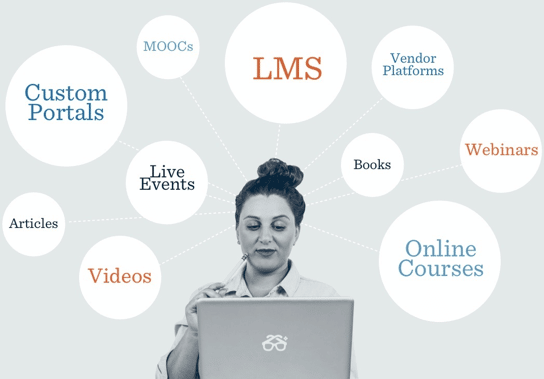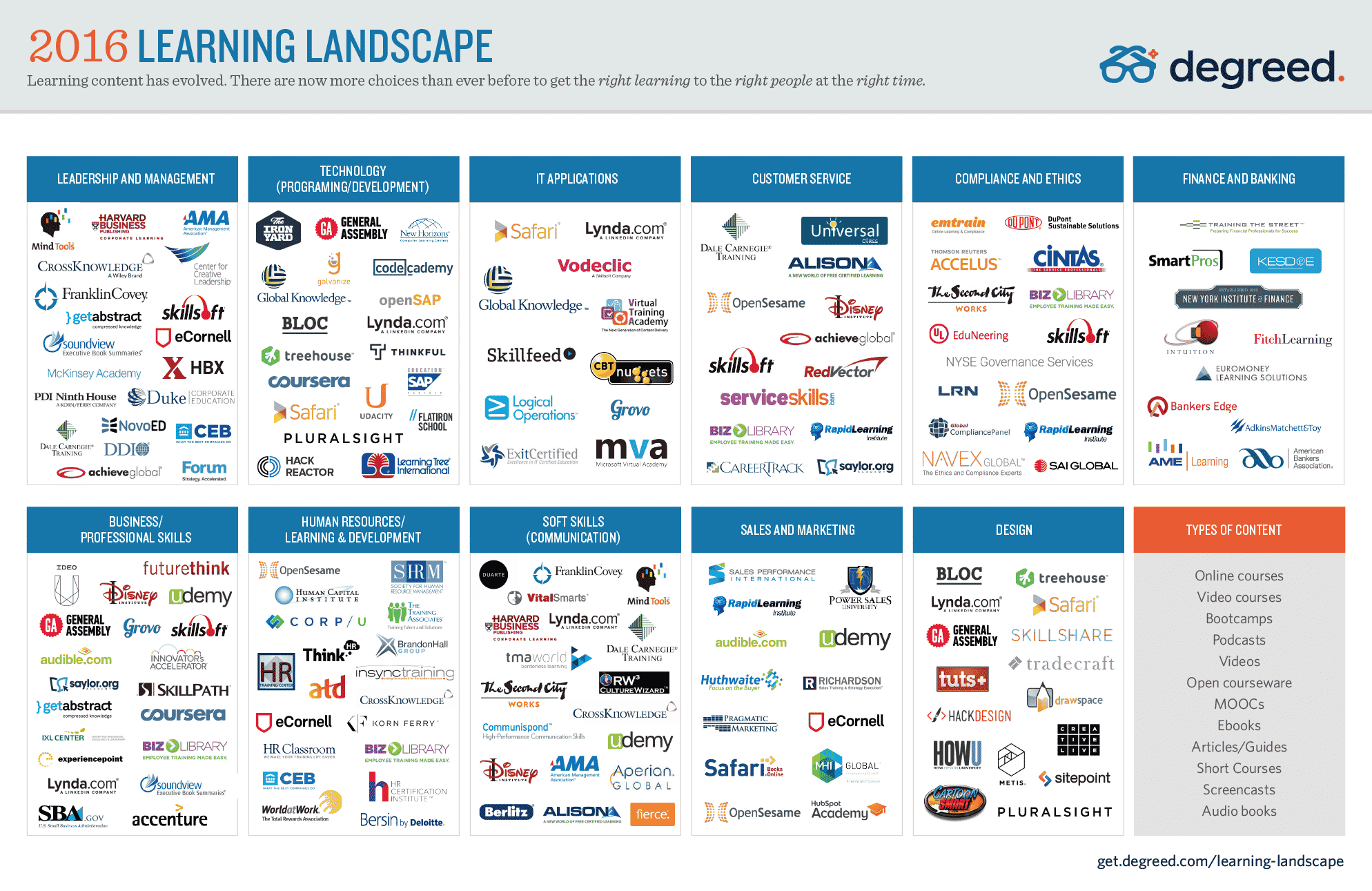Many learning leaders are rethinking their strategy and want to incorporate more digital components to what they are doing with learning. This means thinking beyond traditional models of classroom training, e-learning, and the limited functionality of an LMS. The reality is that people have information available at their fingertips and there is an abundance of tools to choose from.
The key is relevance, context and helping your learners effectively navigate the explosion of content. As you are thinking about creating your digital learning strategy and incorporating digital learning assets and tools into what you offer your employees, it’s imperative you consider and are able to answer the following three questions:
- What is our digital learning strategy?
A digital learning strategy means that you are going to incorporate digital learning assets (videos, online learning, courses, blogs, articles, books) into how you help people learn. But, it’s really more than that – it’s actually thinking about learning differently. There is so much content for learning available to people now, and the rate of change is so fast, that we can’t be bound by old models of learning to satisfy how quickly people need to keep up on the required skills today.
In the old model, a central learning group would get requirements for what people needed to learn (say Java programming), design and develop the “training,” and then set up classrooms, register people, and have them leave their job to attend a class. That process takes time (sometimes a lot of time) and by the time all that happens, your company has moved on and now needs Python programming skills instead.
Instead, embrace a digital learning strategy. Now you can use the over-abundance of available content to your advantage. You can help direct people to digital assets that you have developed, or that already exist, and give them on-demand access. Having a variety of digital asset types also takes into account all the different ways people like to learn – I personally love to read books or listen to podcasts, but others may like to take a multi-week online course. A digital learning strategy is your plan for how you want to conveniently offer all these digital learning assets to your employees.
- Why do we need a digital learning strategy?
One of the reasons it’s so valuable to have a digital learning strategy is that you can provide learning to all your employees – not just the chosen few.
When a digital learning strategy is deployed, it is instantly a global, scalable benefit for all of your people. So if you have employees around the globe, or across the country, a digital strategy can help show all employees you are investing in them and in their skill development – all the time – which is key to employee engagement, especially millennials. Workers will have all types of learning assets at their fingertips whenever they need them. So instead of asking the learning department to develop a particular type of learning, people can access thousands of learning assets that can help them right away.
Many companies spend the majority of their budgets on leaders and managers or high-performing employees and leave the rest of their employees to fend for themselves. But how can “the rest” succeed without support and guidance, too? Having a digital strategy can help you reach all of your employees and help you have a competitive advantage in terms of retaining people. Employees want to build their skills and want you to invest in them, so if they feel your company will do that and others won’t, that gives you an edge.
- Which digital content should we include?
Here’s where a little analysis as well as iteration comes into play. At my last company when we were trying to decide which content to include in our digital strategy, we had just begun creating the learning organization, so we didn’t have any of our own content yet. In order to get learning to people quickly, we partnered with a few leading content providers that have libraries of digital content (examples include Plural Sight, BigThink, SkillSoft, Lynda.com, Safari Books, and Harvard Publishing, although there are hundreds out there).
We chose three content partners and tracked the usage of providers content to see what our employees were needing and using. We also included some of the free content out there (such as Ted Talks and YouTube videos). That worked well for creating our first digital strategy, but over time, we dropped some providers and partners and added some of our own company-specific digital content into the mix as we learned what was working best for our employees.
Unfortunately, many online learning strategies start with buying technology – generally an LMS – and then people build the digital strategy around the technology. To be really successful, though, you need to create your strategy first and then see what technology will support what you really want it to do. New technology is making new things possible. The key is just to make sure you know what problems you are trying to solve and then you can make the magic happen.


